Name Bicolour Adopted on 26 February 1986 Country Haiti | Use National flag Proportion 3:5 | |
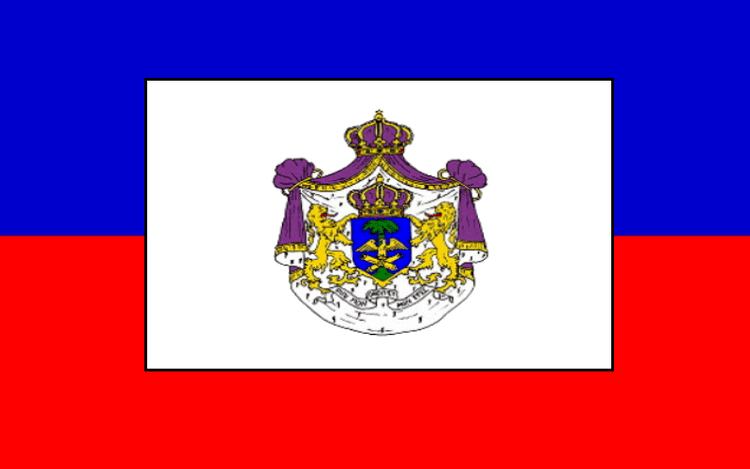 | ||
Design A horizontal bicolour of blue and red, charged with the Coat of Arms in a small white box in the center. Design A horizontal bicolour of blue and red. | ||
The national flag of Haiti is a bicolour flag featuring two horizontal bands coloured blue and red, defaced by a white panel bearing the coat of arms. The coat of arms depicts a trophy of weapons atop a green hill, ready to defend freedom, and a royal palm symbolizing independence. The palm is topped by the Cap of Liberty. The motto L'Union Fait La Force ("Unity Makes Strength") appears on a white ribbon below the arrangement.
Contents
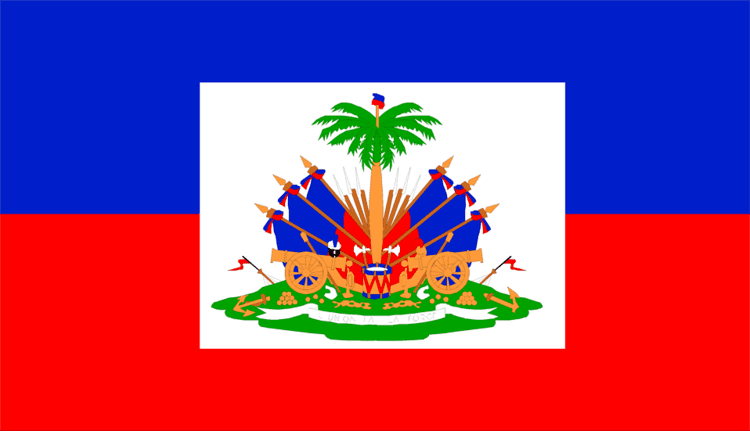
Present design
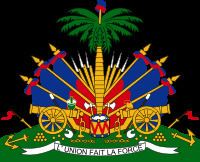
The present design was first used by the Republic of Haiti under President Alexandre Pétion in 1806. It was readopted by Article 3 of the current Constitution of Haiti on February 25, 2012, and made square as part of its readoption.
In its semi-official English translation, Article 3 reads:
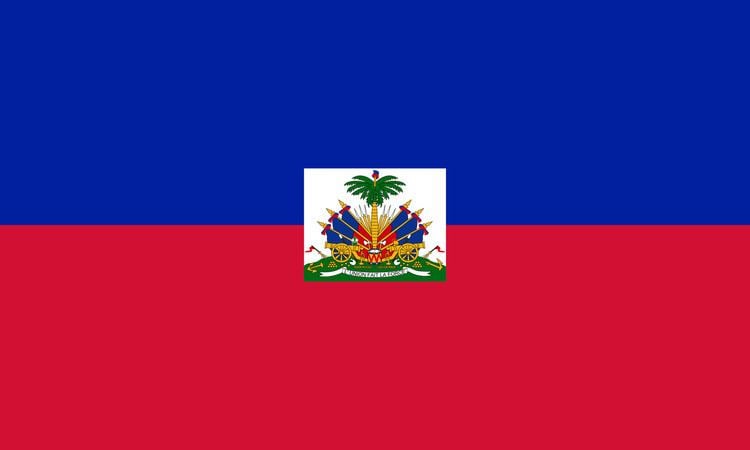

Omitted from the English translation is section b of the French original: Au centre, sur un carré d'étoffe blanche, sont disposées les Armes de la République ("In the center, on a square of white cloth, are placed the Coat of Arms of the Republic.")
The civil flag and ensign lacks the coat of arms.
History
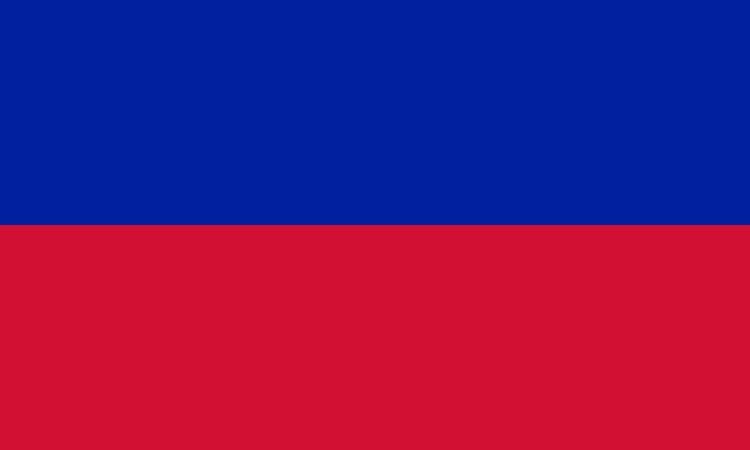
The first purely Haitian flag was adopted on May 18, 1803, on the last day of the Congress of Arcahaie, about fifty miles north of Port-au-Prince. Haitian lore holds that the newly appointed revolutionary leader Jean-Jacques Dessalines created the flag by taking a French tricolor and ripping out the white center, which he discarded. He then asked Catherine Flon, his god-daughter, to sew the remaining bands together. The white pale removed, the blue was taken to represent Haiti's black citizens and the red the gens de couleur. The story is widely known in Haiti: the anniversary of the date is celebrated as the Haitian Flag Day and images of Catherine Flon have appeared on Haitian currency and stamps.
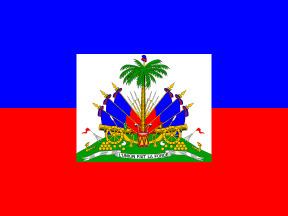
Following his proclamation as Emperor Jacques I, Dessalines promulgated a new constitution on May 20, 1805. In it, the colors of the flag were altered to black and red. This flag being subsequently adopted by Henri Christophe, the republicans under Alexandre Pétion returned to the colors blue and red, subsequently turning them horizontal and adding the newly adopted Haitian coat of arms.
During the period of the Haitian Empire of Faustin I, his coat of arms was used on the flag and for official functions, but it was subsequently abandoned upon his removal from office.
Between 1964 and 1986, the family dictatorships of François "Papa Doc" and Jean-Claude "Baby Doc" Duvalier returned to Dessalines' black and red design. They included the national coat of arms, but altered the flags in its trophy to black as well.
Because the coat of arms is only used for national and military flags, whereas the civil flag consists solely of the two unaugmented horizontal bands, it was discovered at the 1936 Berlin Summer Olympics that Haiti and Liechtenstein were using the same flag. This led to the addition of a crown to the design of the flag of Liechtenstein.
